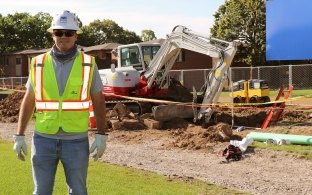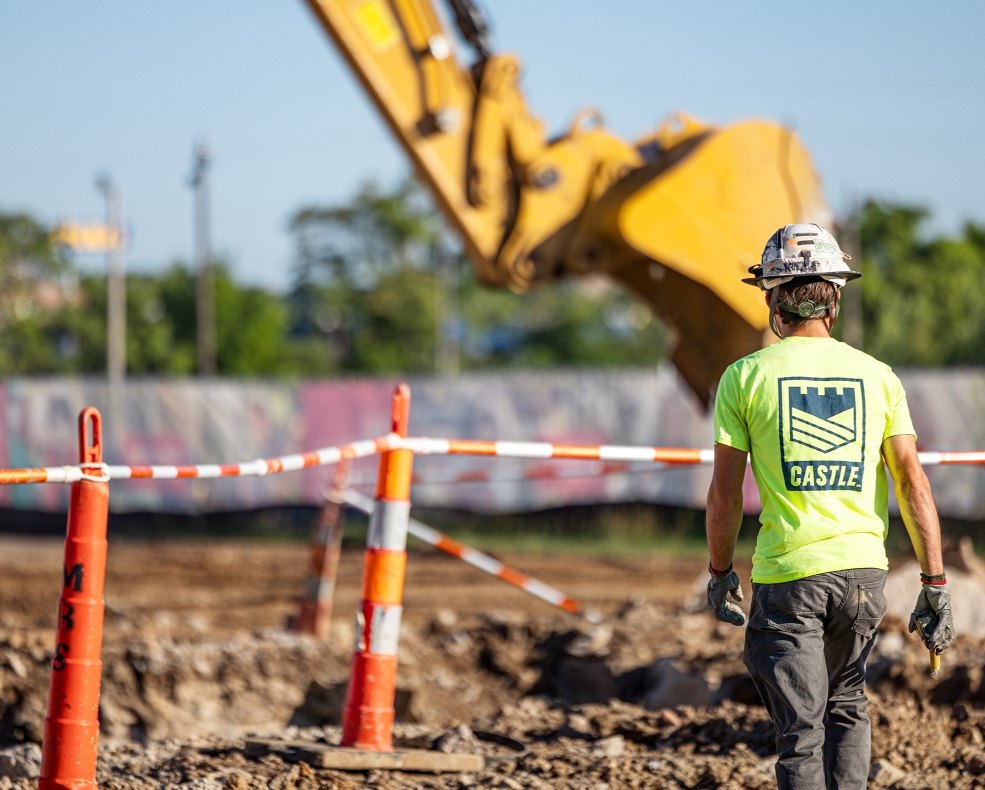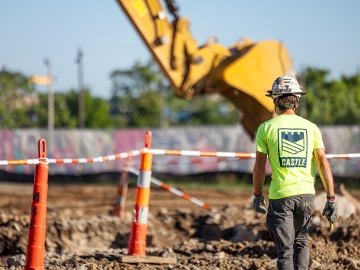6 Factors in Sustaining a Strong Safety Culture
It’s not unusual for construction companies to declare that safety is their top priority.


It’s not unusual for construction companies to declare that safety is their top priority.
But building and sustaining a safety culture involves far more than just adopting a core value or creating a clever slogan. It requires consistent, continuous effort that influences every project, every activity and every team member.
At Castle, safety is foundational to everything we do. Our commitment has helped earn many recent safety awards from the Associated General Contractors of America (AGC), American Subcontractors Association, National Association of Women in Construction and other organizations.
Building a Culture of Safety and Quality
Castle’s safety culture is also reinforced every time a team member decides to return after working for another company. “It means a heck of a lot whenever someone wants to come back to work with us because we make safety a priority,” says Castle Project Director Jeremy Wood.
Here are six factors that distinguish Castle’s approach to safety:
1. Ongoing Training and Education
A robust safety onboarding and orientation process lays a strong foundation of general safety principles for all Castle employees. Team members also receive site-specific safety training such as OSHA 30-hour training, confined space training and competent person for excavation training.
All new crew members working on a job are required to wear a sticker on their safety helmet and a different vest color for 30 days to signal their status to others. These individuals are typically paired with a more experienced team member so they can learn real-time insights about safety practices.
Prior to starting a new project, Castle prepares a site-specific safety plan that specifies strategies for minimizing the risks and hazards of that project. “We take time to walk the job in advance and engage our safety coordinators, supervisors, foremen and directors in a pointed conversation about the safety hazards and procedures that we need to follow,” says Wood.
2. Consistency
Castle’s commitment to safety extends from the senior leadership team to the craft laborers and operators who deliver projects.
Team members take safety seriously on projects at every scale — from the expansion of an elementary school parking lot to the complicated sitework on a congested urban campus. “Our mindset is that every job has its hazards, and there's always a potential for something that could harm somebody,” says Assistant Project Safety Manager Cody Hobbs.
Wood agrees there’s no room for complacency.
“Every time we roll a piece of equipment off the back of a truck, it’s inherently dangerous,” he says. “We just can't pump the brakes on safety for any job, regardless of size.”
3. A Team Approach
Castle hosts a quarterly safety meeting that brings together field, craft and office employees to share details about the team’s safety performance and any safety-related incidents so they can collectively learn from those experiences.
“We all understand that we don't get better as a company unless we're learning together,” says Wood. “That’s why we bring everybody together once a quarter so that we can continue to grow and learn as a team.”
4. It’s Personal
It’s important to never lose sight of the fact that safety is primarily about taking care of people.
“We want our folks to sincerely know that they matter to us as individuals, and we want them to be able to go home to their families every day,” says Steve Chavez, Castle safety manager in the Southern California region. “When I joined Castle, one of the first things I noticed is the way that everyone respects each other. Because it’s a small organization, everybody knows each other and works well together.”
5. Focusing on the Positive
Our safety approach isn’t limited to identifying incidents and issues that need to be addressed.
Castle’s positive reinforcement program recognizes team members who go above and beyond to embody the company’s safety culture. At the conclusion of each quarter, those individuals are entered into a drawing for a chance to win a valuable prize. “The more you recognize somebody for doing a good job, the more likely they're going to continue to do the right thing,” notes Hobbs.
6. Serving Others
As the first crew that often works on a jobsite, Castle takes seriously its role in setting the stage for all other teams.
“I talk with my group about how we can think outside the box to ensure that not just our folks go home safely every day, but everybody who works in this industry goes home safely every day,” says Wood. “We’re proud of our safety culture and record, but we also recognize there are always opportunities to improve our processes, training and communication to ensure safety remains at the forefront of everything we do.”







